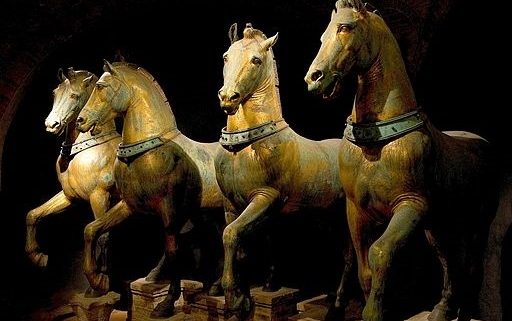The Nika Riots
Imagine if the Super Bowl was in your backyard. Cool! But what if both teams and their fans became a single mob that caused a week of violent riots? Less cool. That’s what happened to Byzantine emperor Justinian I in mid-January of AD 532 (but with chariots, not football). The destruction came to be known as the Nika Riots.
Throughout 531, Byzantine emperor Justinian I and his bureaucrat Tribonian had labored to overhaul the Empire’s legal code, including tax policy. While the Justinian Code is incredibly historically and legally important, it was immensely unpopular upon publication. This was in no small part due to the incredibly high taxes it implemented to fund the emperor’s wars and building projects. Constantinopolis began to seethe.
The peoples’ anger came to a head in the beginning of 532. Two chariot-racing factions, the Blues and the Greens, set aside their divisions to stage a protest at the first race of the year. Which, of course, occurred in the Hippodrome in Justinian’s backyard. The emperor, frightened by this show of unity against him (and the protesters’ chant of Nika, nika! which means either win, win or conquer, conquer!), initially decided to flee the city. Only empress Theodora held him back, saying “royalty is the best burial shroud.”
Over the next few days the mob grew. They rampaged through the city and set fire to churches and political buildings, only returning to the chariot track when they were sated with destruction and ready to make their demands. Justinian had spent the time gathering his own forces and fell on them with no mercy. By some accounts, up to 30,000 people were killed in the Hippodrome by Imperial forces.
The Nika riots had two major consequences. First, all was quiet on the domestic front for the rest of Justinian’s rein. Secondly, the emperor had learned his own lesson. When the revised tax code came out, it was far more modest. In spite of this episode, Justinian’s reign was generally long and prosperous. The Byzantine Empire would not see another emperor like him until Heraclius.
ECC has slabbed, loose, and packaged coins of Justinian I, that may have been used during the Nika riots themselves.




